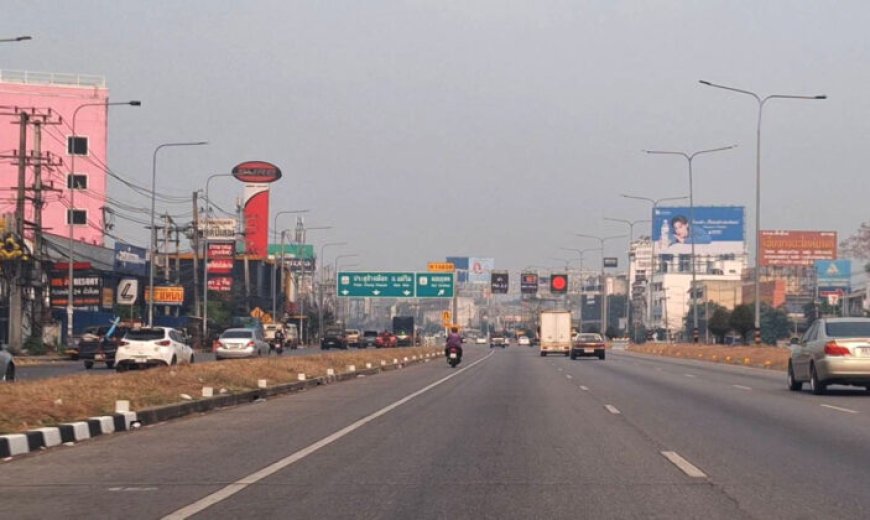Chiang Mai begins three days of working from home to reduce PM2.5.
CHIANG MAI – Nirat Phongsitthaworn, the Governor of Chiang Mai, signed an announcement on Monday to carry

Chiang Mai begins three days of working from home to reduce PM2.5.
Chiang Mai Smog engulfed Chiang Mai, making it hard to see Doi Suthep on April 8, 2024. CHIANG MAI – Nirat Phongsitthaworn, the Governor of Chiang Mai, signed an announcement on Monday to carry out actions for three days, April 9-11, to avoid and mitigate the impact of micro dust particles PM 2.5, which had consistently surpassed the standard.
They require all government agencies to work from home and are proposing that businesses explore allowing employees to do the same.
Due to the high number of fires and dust in six Chiang Mai districts—Chiang Dao, Mae Taeng, Chai Prakan, Fang, and Phrao—Chiang Mai became the most air-polluted city in the world for several days in a row.
There were a high number of fires and dust in six Chiang Mai districts.
The Governor of Chiang Mai Province declared a disaster-affected area on April 6 and designated an area to provide assistance to those affected by fire emergencies and forest fires.
Advertisement
Prime Minister Srettha Thavisin on Monday said the government is not idle about the problem of PM2.5 in the northern region but urge everyone to help solve the problem. He has instructed both Public Health Minister Cholnan Srikaew and Deputy Interior Minister Chada Thai-saed to help out, particularly in Chiang Mai.
“I am well aware of the suffering of brothers and sisters who are affected by PM2.5 micro dust particles and is aiming to tackle the problem in a holistic way,” the PM said.
Prime Minister Srettha Thavisin and Nirat Phongsitthaworn The governor of Chiang Mai watched the operation of a helicopter transporting water from the Mae Ngat Sombun Chon Dam, Mae Taeng District, Chiang Mai Province, to go put out forest fires on March 16, 2024.
Forest fires and air pollution in Chiang Mai and other northern areas have raised serious public health concerns. Prof. Dr. Raviwan Olanratmanee, Dean of Chiang Mai University’s Faculty of Architecture, died of lung cancer on April 3, after being diagnosed with the fourth stage of the disease in February of last year. The doctor diagnosed that it’s probably because PM2.5 causes genetic mutations.
Since March 2022, three non-smoking professors in Chiang Mai, including Dr. Kritthai Thanakritsombat of the Faculty of Medicine, have received diagnoses of lung cancer. Chiang Mai University, who died in December 2023 at the age of 29.
Prof. Dr. Raviwan Olanratmanee, Dean of Chiang Mai University’s Faculty of Architecture, died of lung cancer on April 3, 2024.
Asst. Prof. Dr. Chalerm Liusrisakul, Head of the Department of Internal Medicine, at CMU’s Faculty of Medicine. The northern region has had a problem with PM2.5 for more than ten years, and it is likely to worsen. As a result, during the PM2.5 dust outbreak, the number of hospital patients was steadily increasing.
This study looked at the death rates of lung cancer patients in the North, Northeast, and South from 2010 to 2021. It found that the North, especially Chiang Mai and Lampang provinces, had the highest death rates from lung cancer.
Dr. Sakarn Bunnag, Deputy Director-General of the Department of Medical Services, indicated that the northern region had a higher rate of lung cancer than other regions. Each year, there are an average of 2,487 new cases of lung cancer, or approximately 7 cases per day, and 1,800 deaths from lung cancer, or around 5 cases per day. There are several significant risk factors. PM2.5 is a risk factor. However, it is not the only cause.
_
What's Your Reaction?













































































